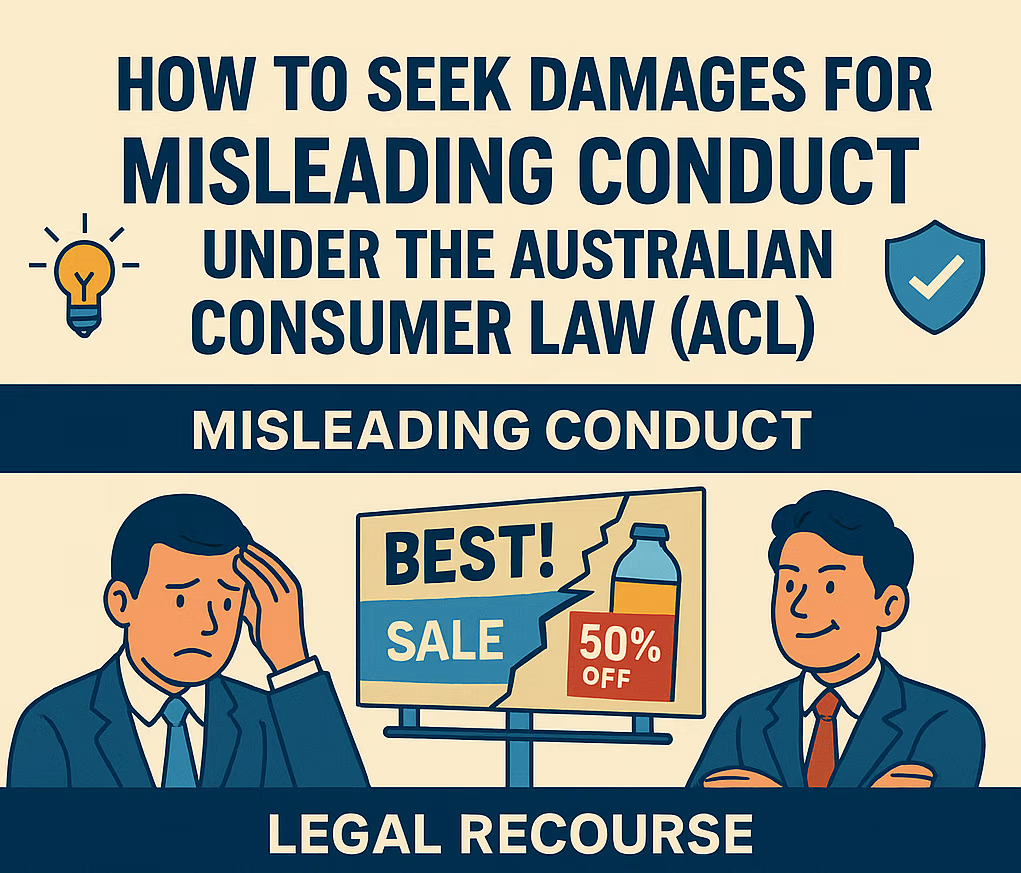 25 March 2025
25 March 2025
The Australian Consumer Law (ACL), found in Schedule 2 of the Competition and Consumer Act 2010 (Cth), prohibits misleading or deceptive conduct in trade or commerce. Section 18 of the ACL is particularly significant for businesses, as it prevents competitors from engaging in conduct that misleads or deceives consumers or other businesses.
When a competitor engages in misleading conduct, affected businesses may suffer financial losses, reputational damage, or loss of market share. In such cases, the ACL provides remedies, including damages, to compensate for losses incurred. This article examines the legal framework for claiming damages under the ACL for competitor misleading conduct.
To succeed in a claim for damages under the ACL, the plaintiff must establish:
Common forms of misleading conduct by competitors include:
Under the ACL, affected businesses can seek:
Damages under s 236 aim to place the plaintiff in the position they would have been in had the misleading conduct not occurred. Courts consider:
TPG was found to have engaged in misleading advertising by promoting "unlimited" broadband plans with undisclosed charges. The High Court upheld penalties and compensation orders, emphasizing that businesses must clearly disclose all material terms in their promotions.
A defendant may argue:
Businesses harmed by a competitor’s misleading conduct can seek damages under the ACL to recover losses. To succeed, they must prove the misleading nature of the conduct, causation, and quantifiable loss. Given the complexities of such claims, legal advice is essential to assess the merits of a case and pursue appropriate remedies.
Proactive compliance with the ACL is crucial for businesses to avoid liability, while affected parties should act promptly to mitigate losses and seek legal redress where necessary.
Contact SDC Lawyers for a tailored advice if you are worried that you have been misled by an ad or a product from organisations.